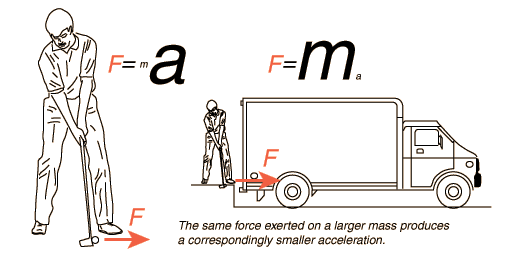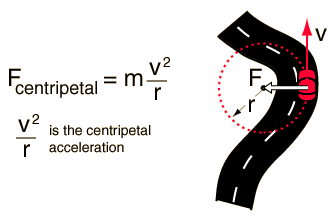Consider the earth and the moon. Place something at the perfect point between them and it stays put because moonweight and earthweight balance, right? It sounds good until you actually think for a few seconds.
The problem is that everything's in orbit and a net force is necessary.
Imagine. Let's place that satellite - your favorite cat in a cute space suit - at that point where the weights balance. Since the system moves and there's no net force on the catastronaut, she will soon no longer be in that zero net force bubble. Even if you put her in motion at the perfect speed to orbit something, she needs a centripetal net force to turn her from her tangential path. So that can't be the lagrange point and he's a lot smarter than I thought.
The real story starts with Newton's 2nd Law of Motion.
That equation quantifies the idea that no acceleration in the universe will occur without a force. But it's wrong. It's not just some random force and it doesn't just apply to linear motion. A better representation is
but only if we understand that it applies to direction changes also. We need a net force to make our catastronaut orbit and we call that centripetal net force. It is always perpendicular to the direction of the velocity (toward the center) and causes all direction changes.
Now let's take the rocket cat and imagine placing her in higher and higher earth orbit between earth and moon. The moon's influence will change the necessary orbital speed until, at that perfect point, the centripetal force needed for constant orbit between earth and moon will be supplied by a combination of the gravitational forces of earth and moon.
In other words, earthweight and moonweight combine to make catastronaut orbit in a moonth.
It turns out that there are five of those balance points where the net force is exactly the force necessary to maintain the same orbital period as the moon. Here's an animation
and it turns out that those five points exist for Sun-Earth and Sun-Jupiter and lots of other combinations. We found trapped asteroids in the Sun-Jupiter lagrange points (another Bermuda Triangle?) and can use lagrange points for satellites.
Lagrange was a genius.
No cats were harmed in the writing or filming of this installment of Freaky Fzx Friday in honor of Lagrange. And cats.




No comments:
Post a Comment